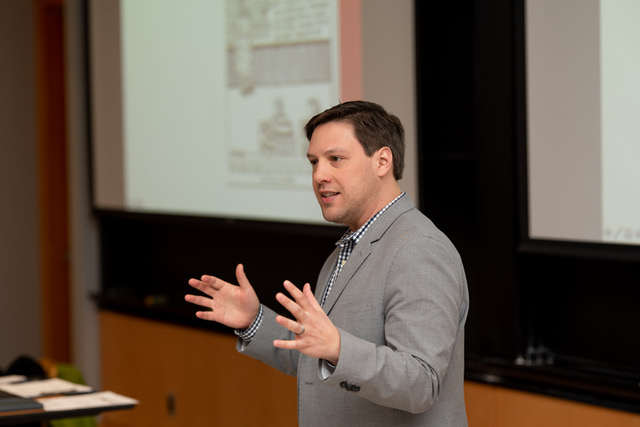
An impressive cross-section of professionals, students, and educators joined MIT Open Learning Senior Learning Scientist Aaron Kessler for a workshop titled “Applying Learning Sciences to Instruction” on Wednesday, at MIT’s annual Festival of Learning. Participants ranging from law professors and physics instructors, to undergraduate educational design students turned out to discuss the history, principles, and applications of learning science at MIT and beyond.
Kessler began by detailing the origins of this relatively new science, which, he explained, began as a way for cognitive psychologists to bridge gaps between theoretical and applied understandings of learning. Learning science takes an interdisciplinary approach, incorporating research from fields like sociology, political science, computer science, and economics. This allows researchers like Kessler to gain insights into how learning and teaching work in real-world settings, like classrooms and lecture halls.
Applying learning science to personal learning and teaching experiences
Putting into practice his own learning science framework, Kessler encouraged active engagement among workshop participants. He began by asking attendees to discuss ways in which principles of learning science, such as “The Testing Effect,” “Interleaved Practice,” and “Spaced Practice,” might be applied in the ways they teach and learn.
One participant noted how Tai Chi requires spaced practice, because practitioners must repeat the most challenging movements to encode them in their long-term memory. Another attendee reflected on her experiences in learning Japanese through an online language app, which utilizes interleaved practice to vary the content and structure of exercises and keep learners engaged.
Encoding new information through active learning was a key takeaway in Kessler’s presentation. The latest findings in learning science emphasize active work in the classroom, rather than the passive consumption of a traditional lecture, meaning that learners must be engaging and re-engaging with content enough to be able to explain it to themselves. For example, an effective, but sometimes mis-implemented method called “Flipped Instruction,” requires learners to consume videos or readings at home and then actively engage with what they consumed passively through active classroom or lab exercises. Anecdotally, a majority of students surveyed said that in-class sessions allowed them to review and practice what they learned from the videos viewed at home.
Where does learning science happen at MIT?
As a researcher associated with MIT Open Learning, Kessler provided participants with an overview of the other MIT Open Learning initiatives that support the research and application of learning science. These include: MIT Residential Education, Digital Learning Lab (DLL), Abdul Latif Jameel World Education Lab (J-WEL), MIT Integrated Learning Initiative (MITili), and MIT Teaching Systems Lab (TSL).
MIT Open Learning works with researchers, educators, learners, member organizations and institutions to innovate, study and scale digital learning technologies on the MIT campus and worldwide. The Festival of Learning is a partnership between Open Learning and the Office of the Vice Chancellor. To learn more about The Festival of Learning, visit https://openlearning.mit.edu/campus/festival-learning.